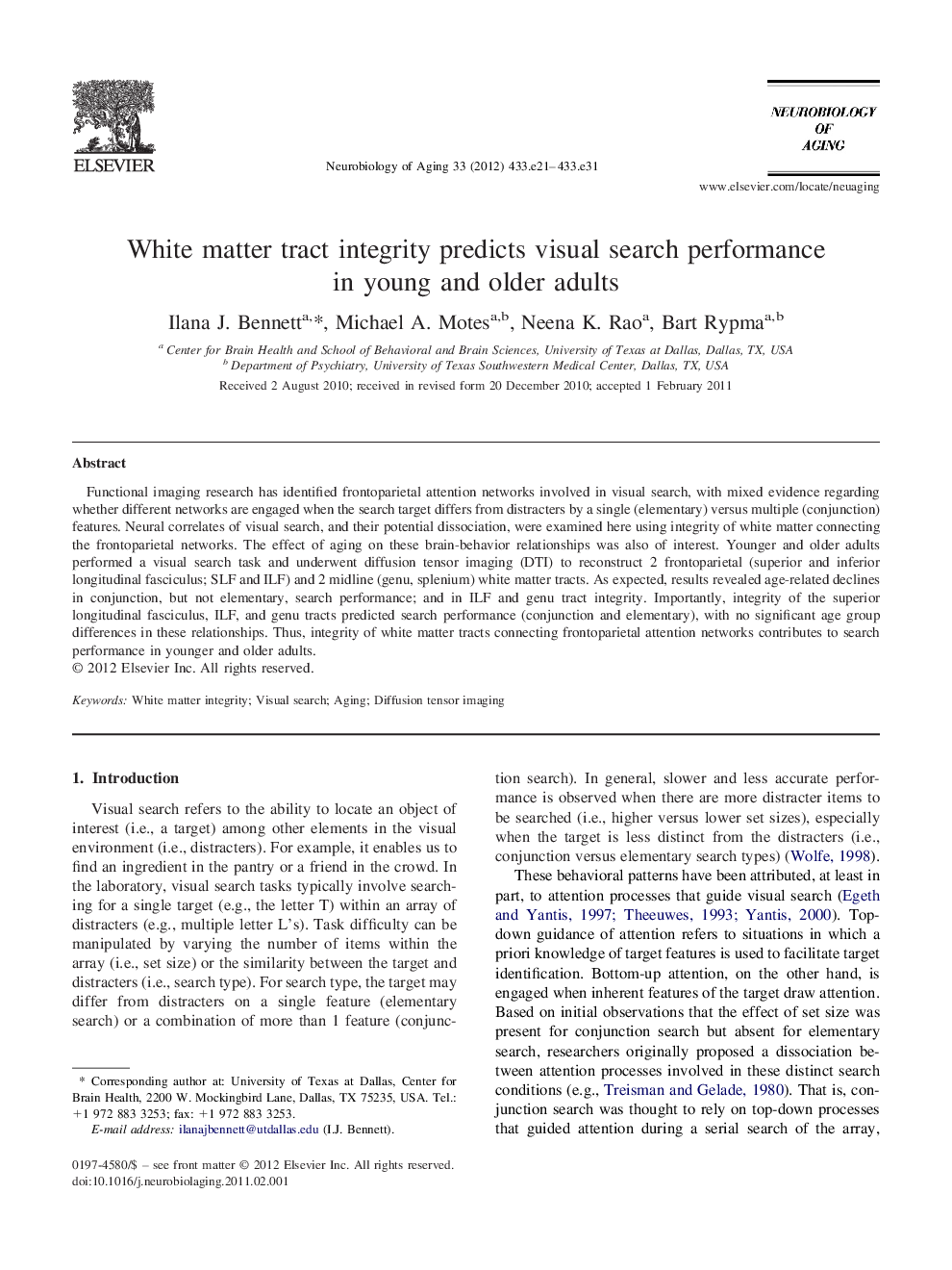| Article ID | Journal | Published Year | Pages | File Type |
|---|---|---|---|---|
| 6810084 | Neurobiology of Aging | 2012 | 11 Pages |
Abstract
Functional imaging research has identified frontoparietal attention networks involved in visual search, with mixed evidence regarding whether different networks are engaged when the search target differs from distracters by a single (elementary) versus multiple (conjunction) features. Neural correlates of visual search, and their potential dissociation, were examined here using integrity of white matter connecting the frontoparietal networks. The effect of aging on these brain-behavior relationships was also of interest. Younger and older adults performed a visual search task and underwent diffusion tensor imaging (DTI) to reconstruct 2 frontoparietal (superior and inferior longitudinal fasciculus; SLF and ILF) and 2 midline (genu, splenium) white matter tracts. As expected, results revealed age-related declines in conjunction, but not elementary, search performance; and in ILF and genu tract integrity. Importantly, integrity of the superior longitudinal fasciculus, ILF, and genu tracts predicted search performance (conjunction and elementary), with no significant age group differences in these relationships. Thus, integrity of white matter tracts connecting frontoparietal attention networks contributes to search performance in younger and older adults.
Related Topics
Life Sciences
Biochemistry, Genetics and Molecular Biology
Ageing
Authors
Ilana J. Bennett, Michael A. Motes, Neena K. Rao, Bart Rypma,
